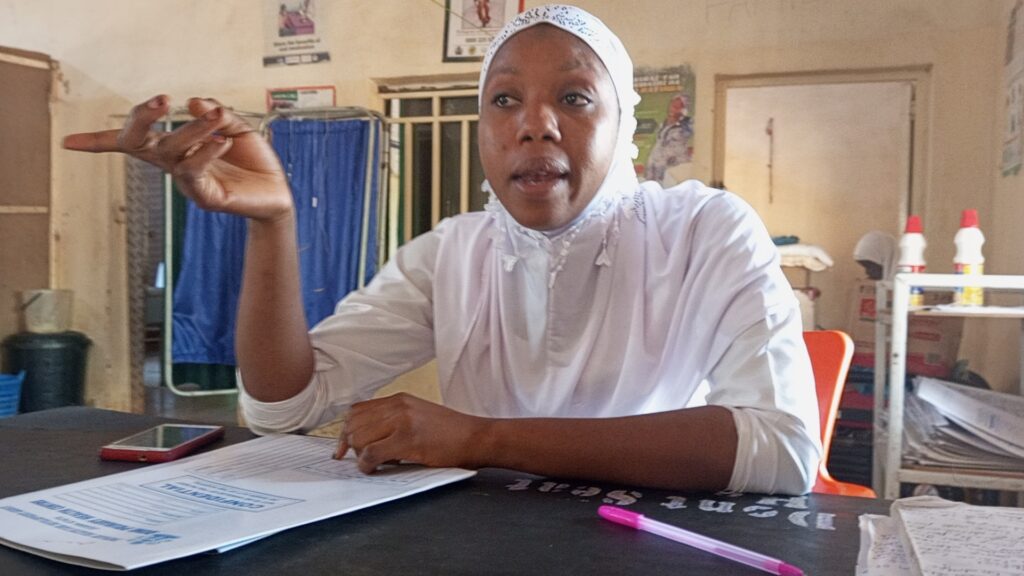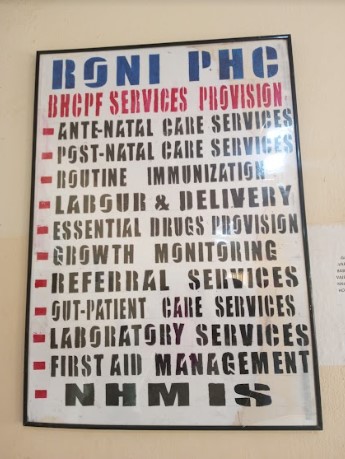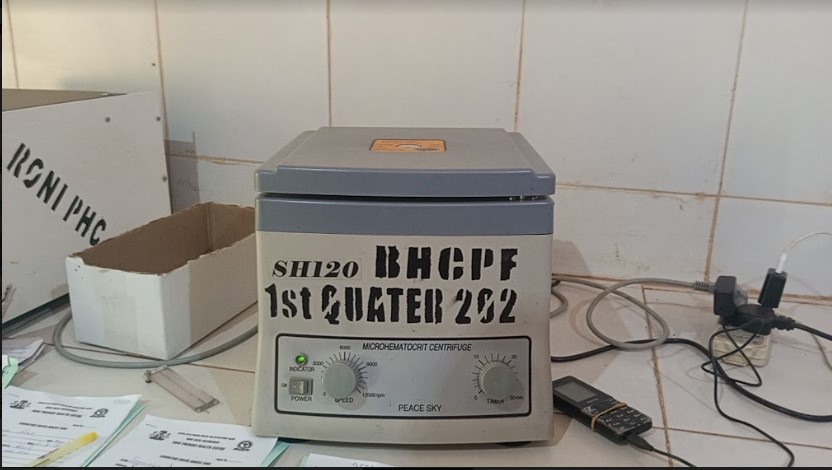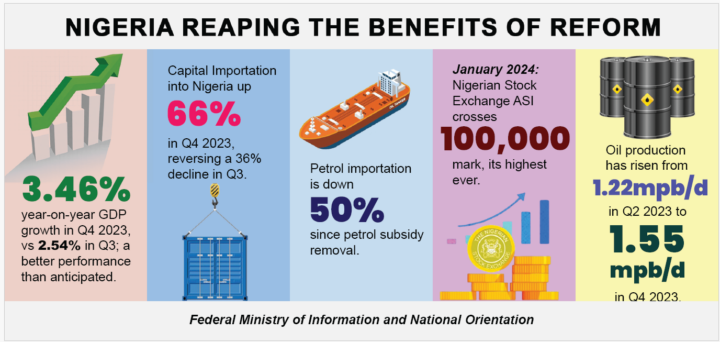An initiative launched in December 2009 to help lower maternal and infant mortality rates in rural, underserved areas of Nigeria, 13 after, the sustainability of the Midwives Service Scheme in Jigawa State continues to stand across the Northwest.
In Ungwar Samalawa, in Dansure ward, Aisha Sani, is one of the beneficiaries of the midwife posting to Dansure Primary Health Centre, Roni Local Government Area of Jigawa. Aisha is fortunate to have attended antenatal under the care of Maimuna Alkali and Jainatu Dansure, the community health extension workers (CHEWs) working at the Dansure PHC.
“We are privileged to have Maimuna, after a long time without midwife-nurse, she is barely two years with us after the other nurses stopped coming, maybe they were transferred to another health centre,” Aisha said.
“Prior to now, women complain about the distance they have to cover to get to the general hospital to deliver. I am always motivated by the nurse’s teachings during the antenatal classes, and it made the delivery process easy except when there is complication or need for referral,” she added.
For Haruna Bako, the officer-in-charge of Dansure PHC, it was hard running a health facility like Dansure without a midwife. The “sustainability scheme’ started by the state has replaced the initial federal government-backed Midwives Services Scheme (MSS) and is being seen as renewed hope for residents.
Read: Investigation: The Multimillion-naira Fund Transforming Jigawa’s Primary Healthcare
“Let’s assume there are no midwives in any of the PHCs in Jigawa State, being a Muslim state, I can authoritatively tell you that most of these women would have resorted to the traditional birth system,” Bako said.
“The sustainability of the scheme has helped pregnant women to develop more confidence in coming to the clinic, attending antenatal, and even coming for checkups during pregnancy. They have confidence in speaking to their fellow women when they visit the facility,” Bako added.
In Roni PHC, Roni LGA, there are two midwives and two community health extension workers (CHEWs). While Habiba and Naimat, the CHEWs, are on the payroll of the state government, Nana Ibrahim and Farida Kabir are on the payroll of the local government.

Interestingly, Bilkisu Auwal, a mother of six children and a cleaner in Roni PHC, described the presence of the midwives in the PHC as a saving grace for the people of the community.

“When women stopped seeing nurses speaking to them during antenatal, a lot of them stopped coming to the clinic. A typical [northern] Hausa woman is shy to speak to a man or even allow a man to touch them even if it’s in the hospital,” she said.
“My last delivery was in Roni PHC facilitated by the midwife on duty. Since the new midwives were posted to Roni PHC, pregnant women have started patronizing the facility, if not some will prefer to travel some kilometres to the general hospital in Kazaure to deliver,” Auwal said
Naimat Adamu, is one of the midwives at Roni PHC, recruited in 2020 and she is paid N60,000. For her, nursing is passion.
“I see working as a nurse as an opportunity to work for my state regardless of what we earn. We all desire to work in urban cities and even travel abroad, but the time will come, but definitely not now,” Adamu said.
“The PHC manager in the local government ensures we are provided with the right working environment, and properly taken care of. If only the issue of delay in payment of salary can be addressed,” she added.
In Walawa ward, Rigim LGA, just like other rural communities in Jigawa, the awareness of development issues such as hygiene, education, nutrition, and maternal and child health is low. For example, the 2018 Nigeria Demographic and Health Survey (NDHS) showed that in Jigawa State, only 21.6% of child deliveries were conducted by skilled birth attendants.
But the narratives continue to change as the government’s investment in the health sector reflects in the recruitment and training of midwives in the state.
Umma Yusuf, a midwife in Walawa PHC, trained alongside Aisha Bashir, a CHEW, courtesy of the Jigawa State government. Giving back to their community remains their topmost priority but they are not motivated.
“I have always wanted to do things better and differently in my community,” Yusuf said.
“The only challenge I can authoritatively say we have is the aspect of our salary which sometimes is delayed into another month.”
She is paid N60,000 a month and gets conducive accommodation for herself and Bashir.
“If they can resolve the delay of our salary, then we are fine,” Yusuf added.
While the midwives in Walawa PHC desire a better package and commensurate compensation, beneficiaries commend and recount their experiences and assistance of the midwives.
Hadiza Abubakar, is a resident of Awon Fulani community, a few metres away from Walawa PHC. The testimony of this mother of three children is the proactive approach of the midwives and the care pregnant women receive whenever they visit the health facility.
“It used to be community health workers (CHEWs) that we have here in Walawa PHC. Whenever there is a delivery, patients are usually referred to another PHC that can take deliveries,” Abubakar said.
“The whole operation has changed, and pregnant women now deliver here at the health centre. My last child was delivered here in Walawa PHC,” she added.
The government’s sustainability plan of the midwife scheme has helped to change the experience for people across Dutse, Gwaram, Rigim, Gwiwa, and Roni LGA.
Habiba Kabir, a resident of Walawa community, narrates her joy since the coming of the midwife and CHEW staff to their community.
“If not because they live with us, I would have lost my pregnancy which is my second one. The first pregnancy came with an experience I won’t want to recount,” she recalls.
“The midwife and CHEWs were called upon and it was even in my house that I was delivered because the only mobility available was a motorcycle. Instead of carrying a pregnant woman on a motorcycle, they were conveyed to my house and there they facilitated the delivery neatly, and provided the necessary drugs for me,” Kabir said.
Like in Walawa, only one midwife, with the help of a CHEW, is on duty.
Fatima Danjuma, a registered midwife working at Sankara PHC, Rigim LGA, has been one of the agents of personal and environmental hygiene to the people of Sankara community because she resides with the people.
Popularly called “Mama Sapta” in Hausa which means ‘neatness’ by women she attends to in the antenatal clinic, Danjuma, through the opportunity of serving as a midwife, has left a footprint in the heart of the people of Sankara community, particularly pregnant women.
“Our work here is to educate the people and facilitate the antenatal process till delivery for pregnant women. In doing this we need to bond with the people, that is why the community provided accommodation for us very close to the clinic, this has made it so easy for us to be reached,” Danjuma said.
“The midwife programme in the state is designed that one staff is paid by the state while the other is a staff of the local government. So, our salaries vary: I receive N60,000, while the other midwife staff is paid N30,000,” she added.
For Maryam Bawa, the midwives’ dedication at the clinic, like Danjuma, remains one of the reasons most pregnant women will sacrifice going to the farm just to attend antenatal.
“We are lucky to have Danjuma here, she is not from this community, but she remains dedicated to her work and ensures the best hygiene care for pregnant women,” Bawa said.
Journey into the Midwife Scheme
The goal of the Midwives Service Scheme (MSS) was to double the proportion of deliveries attended to by skilled birth attendants and lower maternal and infant mortality in target areas by 60 percent by December 2015.
Phase 1 of the MSS took place in 652 primary care clinics across all of Nigeria’s 36 states, serving more than 10 million people.
The MSS is administered by the National Primary Health Care Development Agency and is funded by a special account called the Millennium Development Goal-Debt Relief Gains (MDG-DRG).
The scheme addresses the shortage of skilled obstetric care providers and poor access to basic emergency obstetric care by recruiting and deploying newly qualified, unemployed, and retired midwives, and equipping clinics to provide basic emergency obstetric care.
Because Nigeria is a federation in which the federating units, i.e., state governments, can determine their health care priorities, MSS was designed as a collaboration between the three tiers of government: federal, state and local governments. Each tier of government had roles and responsibilities outlined in a memorandum of understanding signed by all parties in each jurisdiction.
Midwives were recruited into the scheme by the federal government and are then trained and deployed by the federal government to pre-determined PHC facilities in rural communities. Recruited midwives were retired or unemployed midwives, as well as new graduates from schools of midwifery around Nigeria.
Retired midwives who were still able to work potentially had an additional incentive to participate in the scheme as they were paid for providing services within the MSS in addition to any ongoing pension payments. To ensure that 24-hour obstetric services were available in MSS PHC facilities, the midwives were deployed in groups of four to each facility.
CHEWs were also recruited and deployed in pairs to each MSS facility to support the midwives and engage in community mobilization. Communities that had MSS facilities were supported by the government to form community health committees to act as a bridge between the facility and the community.
Four MSS facilities were situated in each local government area (LGA) that was selected to participate in the scheme. These four facilities were linked to a secondary care facility (a General Hospital) to handle referrals from the MSS facilities in what is akin to a hub-and-spoke design.
Midwife Scheme Investment
Between 2013 and 2015, the midwife scheme received N1.5 billion, according to the Federal Budget Office.
The scheme employs over 7,000 midwives across the country, which include new graduates from Schools of Midwifery, unemployed midwives, and retired.
Just like in every other state, in Jigawa, the government paid N30,000 monthly allowances to the midwives and N20,000 to CHEWs under the same service scheme.
Replicating the programme under the ‘sustainability scheme’ some years after, midwives in Jigawa state, are divided into two categories, those on the payroll of the state government and those recruited by the local government including the CHEWs, all reporting to the PHC managers in each LGA.
The midwives on the payroll of the state government receive N60,000 monthly, while those under the local government are paid N30,000, and CHEWs are paid N10,000 monthly.
The Gwaram Experience
Ummi Danladi, a resident of Kila ward, is one of the beneficiaries of having a midwife in their health facility, Kila PHC, Gwaram LGA, attending antenatal care under a midwife nurse is a privilege for Danladi.
“We are grateful to have a nurse like Precious at Kila PHC, everybody here receiving antenatal care today, should have their different experience prior to her coming,” Danladi said.
“We have never had a midwife nurse in Kila, Hajjiya Khadija was the person volunteering to help take delivery some years back till she passed on.
“Though we only have one midwife-nurse, it’s better than not having anyone at all,” she added.
For Ayuba, the midwife nurse in Kila PHC, compensation for being a midwife residing in a community like Kila, should be commensurate with the sacrifice.
“I have been a midwife staff in Kila community for four years now, residing with the people. I am on the payroll of the LGA through the Ward Development Committee Chairman, giving our best to take deliveries across all the villages covered by this PHC. I feel we deserve better compensation and motivation,” Ayuba said.
“I am paid N30,000 monthly because I am recruited by the LGA and I report to the PHC manager in the LGA, we deserve some other allowances considering the hazards of the job,” Ayuba added.
While Ayuba laments the poor compensation as a demotivation, Musa Kila, chairman of the Ward Development Committee, describes the idea of the midwife scheme by the state government as one saving grace for the people of Kila and other communities in Gwaram LGA.
“We have never had the privilege of having a midwife staff to stay with us here to facilitate deliveries and the antenatal process for our women, but now we have two running shifts, one paid by the local government, the other paid by the state,” he said.
“The payment to the midwife staff under the local government is through the N80,000 monthly assistance from the Primary Health Care Agency in Dustse, for maintenance and payment of the midwife staff. This is being duly utilized,” Kila said.
At Maruta PHC, in Gwaram LGA, there is only one midwife at the facility. The centre is a beneficiary of Basic Health Care Provision Funds (BHCPF) and has extended its capacity by creating a maternity section, which takes around 20 deliveries every month across villages covered by the ward.

Munsurat Adama, the registered midwife at Maruta PHC, describes her job as a very hectic one, being the only midwife in the health facility.
“It is really stressful working as the only midwife staff in such a busy health facility like Maruta. It is a wonderful experience, but my service will be more effective if the government can consider bringing another midwife staff to join me so we can run shift just like other health facilities,” Adama decried.
She reports to the local government secretariat for any complaint through the PHC manager in Gwaram LGA.
Hannatu Liman, from Ungwar Sarki community in Maruta ward, is one among the beneficiaries who have enjoyed the presence of a midwife staff at Maruta PHC but wish they can have more than one midwife nurse.
“Sometimes, you will come and the nurse will not be around, you will be told she has gone one leave or break, this is because she is the only one attending pregnant women.
“If the government can consider adding one more midwife-nurse just like we heard other PHCs have, it will help reduce some abnormalities in the health centre,” Liman said.
Government pleads for support, excited at the progress
The Executive Secretary of the Jigawa state Primary Health Care Development Agency Dr Kabir Ibrahim, describes the midwife “sustainability plan” as a priority well achieved by the state government.
“We couldn’t lay off the midwives deployed by the federal government during the period of the scheme, so we devised a sustainability plan of one primary health care centre, one midwife staff, and one community health care worker (CHEW),” Kabir said.
“The midwife scheme initiative tremendously helped us in Jigawa state, at a point in time, daily indices of infant and maternal mortality keep going up, this was due to poor attention and experienced workforce, the sustainability plan has helped reduced the indices unnoticeably,” he added.
While the state desires to have two midwife staff in each of the PHCs across Jigawa State, the financial strength of the state remains a challenge.
“Everyone understands the world economic situation today, in the state, though we have an appreciative GDP, all we will plead for is support from the federal government to help introduce the scheme in full partnership with the state.”
This report is published with support from the International Budget Partnership IBP and the International Centre of investigative Reporting, ICIR.




